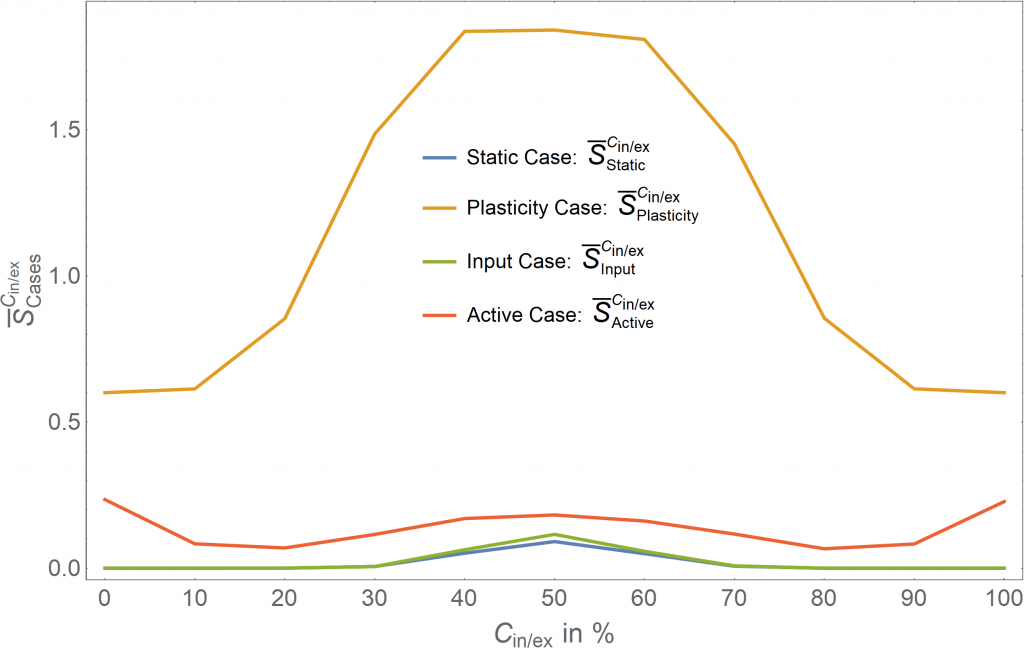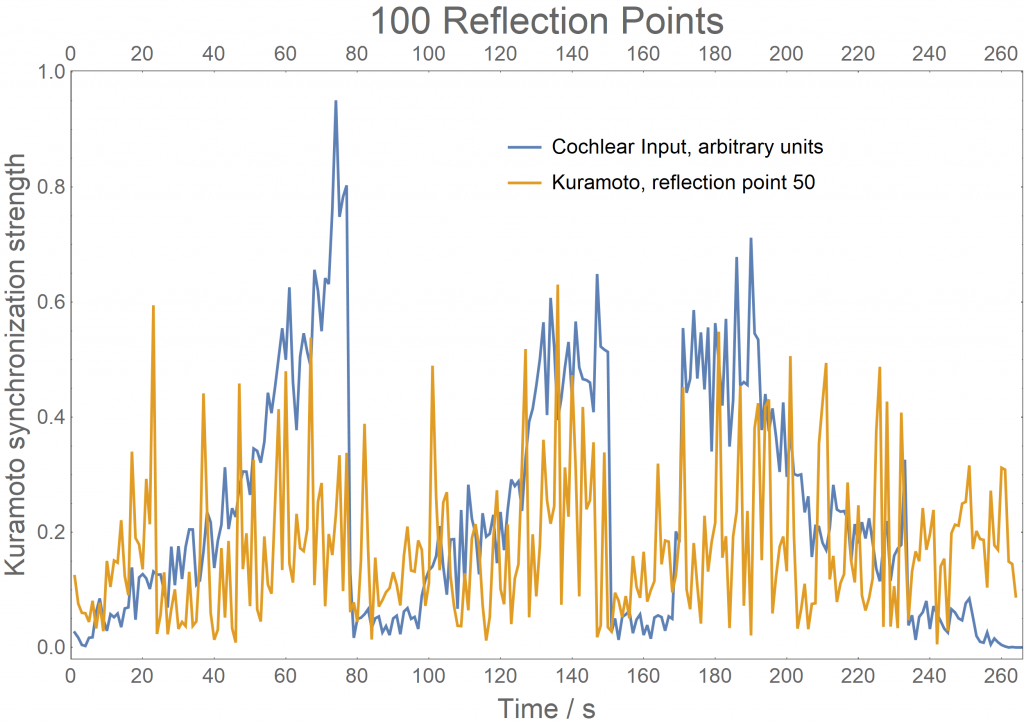The IPF works as a brain model. When randomly choosing a viewpoint neuron, its impulse going out to other neurons and brain regions gets reflected, damped, and returns to the viewpoint neuron from which another impulse goes out.
Below are different neural time series of brain dynamics calculated using a Brain IPF model. They show a) convergence, b) quasi-chaotic behaviour, c) complex behaviour suddenly converging, and d) a bifurcating dynamics suddenly becoming chaotic.

Such a model also needs adaptivity of neurons which is achieved by adapting the values of α in the model, the neural strength.
Although such a model is very simple, it exhibits basic, nontrivial properties of the brain. E.g. it predicts an optimum of stability of a brain for a relation of 10-20% of inibitatory vs. excitatory neurons. Below is a plot of this behaviour for different cases of plasticity vs. non-plasticity and input vs. non-input (for details see papers below):

Also, the brain activity is strongest for delay times between an external stimulus and a brain reaction of about 300 ms. This corresponds to typical Event-Related Potential (ERP) delays.
Finally, the ‚memory‘ of the Brain IPF is about 3-5 seconds, corresponding to short-time memory.
All these effects are independent of the amount of reflection points used in the model.
When using a Hip Hop song as input to the model it also behaves like a real brain in terms of synchronization between different brain regions. Below is a relation between cochlear input of the musical piece ‚One Mic‘ of Rapper NAS (blue) and brain synchronization of the IPF Brain model with this cochlear input (yellow). In an EEG experiment, the brain was found to follow the displayed synchronization over time (see paper below for details).

Thereby, synchronization corresponds to temporal lobe epilepsy, known for altered states of consciousness.
Lit.:
Bader, R.: Modeling Temporal Lobe Epilepsy during Music Large-Scale Form Perception Using the Impulse Pattern Formulation (IPF) Brain Model. Electronics 2024, 13(2), 362; https://doi.org/10.3390/electronics13020362.